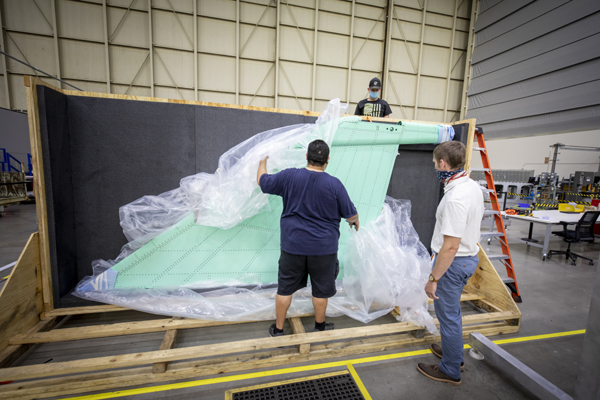
Lockheed Martin
Unpacking the Future of Supersonic Air Travel (News Release)
The vertical tail of NASA’s X-59 Quiet SuperSonic Technology airplane is unpacked from its shipping crate after delivery to Lockheed Martin’s Skunk Works facility in Palmdale, California. Assembly is taking shape there in anticipation of the X-59’s first flight some time in mid-2022. Made of an aluminum alloy, the vertical tail’s pale green color comes from a corrosion-protecting coating applied to the bare metal. The structure will be placed atop the single F414-GE-100 jet engine to form the X-59’s tail and contribute to the aircraft’s overall height of 14 feet.
Designed to produce quiet sonic “thumps” when flying supersonic, the X-59 will be flown over select communities to measure public perception of the sound. Results will be given to regulators to use in determining new rules that could allow commercial faster-than-sound air travel over land.
Source: NASA.Gov
****

Lockheed Martin

No comments:
Post a Comment